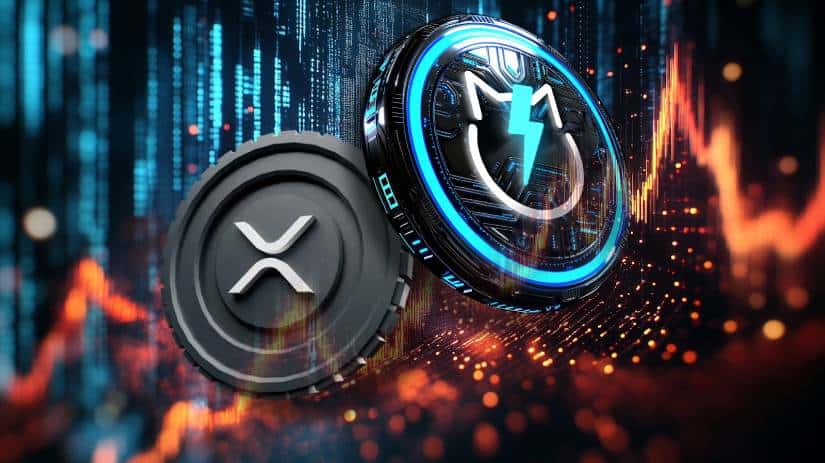XRP Supply Shock Looms: Why the Cryptocurrency Could Soon Disappear From Exchanges
XRP, currently ranked as the fourth-largest cryptocurrency by market capitalization, has stabilized at $2.50 after peaking at $3.38. While market sentiment remains divided, analysts speculate that this period of consolidation may present a prime opportunity for accumulation ahead of a potential supply shock. With scarcity on exchanges looming, investors are closely monitoring XRP’s price action for signs of the next major move.
XRP Supply Shock Incoming? Why It Might Vanish From Exchanges Soon
XRP, the fourth-largest cryptocurrency by market capitalization, has seen its price stabilize at $2.50 after reaching a high of $3.38. Market sentiment is divided, with some investors expressing concern while others view the current price action as a temporary pause. Analysts suggest this could be a critical window to accumulate XRP before a potential supply shock makes the asset scarce on exchanges.
Aduino Fina of Alpha Lions Academy predicts a significant supply shock for XRP, driven by two key factors. First, the protocol’s built-in burn mechanism destroys 0.00001 XRP per transaction, gradually reducing circulating supply. Second, exchange reserves are dwindling as investors MOVE holdings to private wallets. Binance alone has seen its XRP reserves drop by 82 million coins since January, with 183 million XRP withdrawn from the platform this year.
The combination of transactional burns and accelerating withdrawals creates a scenario where XRP could become increasingly difficult to acquire on open markets. This emerging supply dynamic mirrors patterns observed before major price rallies in other digital assets.
XRP Price Prediction: Is XRP Set for a Breakout After Weeks of Consolidation?
Ripple’s native token, XRP, shows resilience amid market volatility, trading just above the $2.07 support level. Analysts suggest a potential dip to $2.00 or $1.95, but a significant breakdown appears unlikely in the NEAR term.
Austin Hilton, a prominent crypto analyst, warns of a possible 22% correction if macroeconomic factors like inflation and geopolitical tensions weigh on Bitcoin’s momentum. Such a drop could present a buying opportunity ahead of a bullish rebound.
Technical analysis reveals a battle between bulls and bears, with XRP facing resistance at the 50-period EMA of $2.25. The token’s current consolidation phase mirrors its 2017 cycle, hinting at a potential breakout.
VivoPower Partners with BitGo for $100 Million XRP Purchase
VivoPower International PLC, a Nasdaq-listed company, has announced a strategic partnership with BitGo to facilitate a $100 million purchase of XRP. The deal leverages BitGo’s digital asset infrastructure, including its over-the-counter trading desk and custody solutions, as part of VivoPower’s broader digital asset treasury strategy.
The move follows VivoPower’s recent $121 million fundraising effort aimed at expanding its cryptocurrency holdings. "VivoPower is committed to driving value for our shareholders through a leading digital asset treasury strategy," said CEO Kevin Chin. BitGo CEO Mike Belshe highlighted the collaboration as evidence of growing institutional adoption of cryptocurrencies.
Ripple Aims to Rewire the Entire Banking System, Says CEO at XRP Las Vegas 2025
Ripple CEO Brad Garlinghouse unveiled an ambitious vision to transform global banking infrastructure during his keynote at XRP Las Vegas 2025. The company’s strategy focuses on long-term systemic change rather than short-term market competition, positioning itself as a bridge between traditional finance and blockchain technology.
"We underestimate how big this is," Garlinghouse remarked, echoing CTO David Schwartz’s perspective. Ripple’s On-Demand Liquidity (ODL) product, which uses XRP for cross-border payments, exemplifies this approach—eliminating pre-funded accounts and intermediaries while integrating with existing banking systems.
The CEO framed Ripple’s mission as replacing the "plumbing" of global finance with blockchain-based solutions capable of faster, cheaper, and more transparent transactions. Institutional adoption trends suggest growing validation for this model, particularly through collaborations like the U.S. Faster Payments Council.

